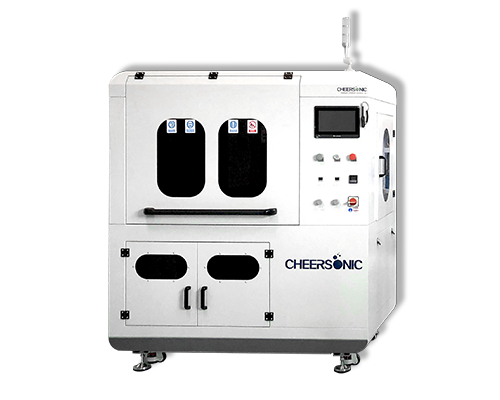Graphite Bipolar Plate Production Process
Graphite Bipolar Plate Production Process – Fuel Cell Coating – Cheersonic
At present, the application of fuel cell systems in the market is mainly commercial vehicles, and the core component of fuel cell stacks is mainly graphite plate stacks. From the perspective of future development, graphite bipolar plates will still occupy the commercial vehicle market for a long time. larger share. So why does the graphite bipolar plate occupy such a large market share, and how does it change from graphite to bipolar plate step by step?
The cost, mechanical properties, air permeability, corrosion resistance, electrical conductivity and surface contact resistance of bipolar plates have strict requirements as the core indicators of bipolar plates. Therefore, the selection of raw materials for graphite bipolar plates and the processing technology affect the Whether it can meet the needs of the final target market.
According to different process requirements, graphite can be made into powder, coil, sheet and emulsion, but its raw materials are mainly divided into three categories:
Graphite powder: a substance with a very sensitive chemical reaction, its resistivity will change in different environments, depending on whether the graphite powder can ensure the uninterrupted graphite powder in an insulating object. High temperature resistance, chemical stability, plasticity and thermoplastic resistance are all good.
Expanded graphite: a loose and porous worm-like substance obtained from natural graphite flakes through intercalation, water washing, drying and high temperature expansion. In addition to the excellent properties of natural graphite itself, it also has the characteristics of softness, compression resilience, adsorption, and radiation resistance that natural graphite does not have. Expanded graphite can instantly expand 150 to 300 times in volume when exposed to high temperature.
Flake graphite: It is a natural crystalline graphite with complete crystallization, which is like fish phosphorus, belongs to the hexagonal crystal system, has a layered structure, is thin and has good toughness, excellent physical and chemical properties, and has good thermal conductivity, electrical conductivity, and heat resistance. shock resistance, corrosion resistance, etc.
Continuous Production Process
The continuous production and processing of graphite bipolar plates is mainly divided into two categories, one is the plate molding process of expanded graphite composite materials, and the other is the molding/injection molding process of graphite powder resin conforming materials.
Category 1: The expanded graphite sheet is calendered, formed and removed, and then enters the resin impregnation, vulcanization, bonding and sealing vulcanization process, and finally forms a bipolar plate product. At present, the process has the following characteristics:
1. It can well meet the requirements of the shape, surface geometry and mechanical size of the plate;
2. Due to the continuity of the expanded graphite material, it has high electrical and thermal conductivity;
3. To meet the required surface hydrophobicity, it needs to be solved by co-processing of technology and materials;
4. If the rolling process is used, its design accuracy and process accuracy should be further improved;
5. The post-processing of mold clamping pressure, resin ratio and surface contact resistance is the key to affecting the performance of the electrode plate;
Category 2: First, the mixed material of graphite powder and resin is prepared, and then the mixed material and mold are pre-molded, followed by molding and vulcanization, and finally bonding, sealing and curing to form a product. At present, the process has the following characteristics:
1. It can well meet the requirements of the shape, surface geometry and mechanical size of the plate;
2. Since the mixed particles block the continuity of the graphite material, the conductivity should be further improved under high current;
3. To meet the needs of surface hydrophobicity, it needs to be solved by co-processing of technology and materials;
4. The ratio and selection of resin, vulcanization time and post-treatment of surface contact resistance are the keys to affecting the performance of the electrode plate
Judging from the current development of the hydrogen energy industry, the production process of the pole plate has progressed rapidly. The transformation of the traditional graphite industry and related manufacturing industries has provided a great help for the production of fuel cell bipolar plates. I hope that fuel cells can enter thousands of households as soon as possible.

Our company’s ultrasonic spraying equipment can be sprayed on a variety of different metal alloys, including the preparation of platinum, nickel, iridium and ruthenium-based fuel cell catalyst coatings, as well as PEMs, GDLs, DMFCs (direct methanol fuel cells) and SOFCs (solid Oxide fuel cell) manufacturing. The battery manufactured by this technology has the characteristics of high battery load and high battery efficiency.

